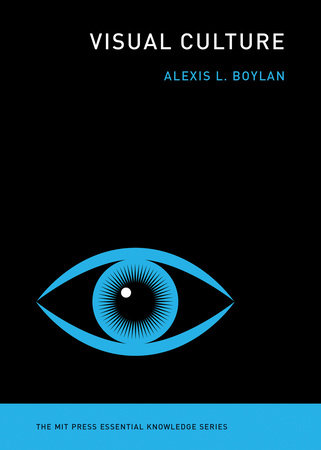The MIT Press has been publishing leading-edge art titles since our founding in the 1960s—and the list only continues to grow
The piece below was originally published in the print edition of Library Journal in July 2022.
When you think of MIT Press, math, science, and engineering books might be top-of-mind. But the press has been publishing leading-edge art titles since its founding in the 1960s, and its list now numbers 20 to 30 books a year. As one of the largest and most prestigious university presses in the world, however, MIT Press’s approach is radically different from the typical publisher of art books.
“MIT Press art, architecture, design, and visual culture titles are beautiful, but they are not published for coffee tables,” says editorial director Gita Manaktala. “These books offer readers an access point for intellectual curiosity and exploration on pressing topics through art and design lenses.”
Exemplifying the press’s mission is In the Black Fantastic by Ekow Eshun, which highlights the important and under-recognized work of Black artists who use elements from fantasy, folklore, myth, science fiction, spiritual traditions, and ceremonial pageantry to address racism and social injustice. Its 300 color illustrations depict work that spans photography, painting, sculpture, cinema, graphic arts, music, and architecture. In the book’s introduction, Eshun notes that “the Black fantastic is less a genre or a movement than a way of seeing, shared by artists who grapple with the legacy of slavery and the inequities of racialized contemporary society by conjuring new narratives of Black possibility.”
In Free Berlin, Briana J. Smith tells the alt-art story of experimental artists in 1970s-to-present-day Berlin. Smith shows how through performance art and urban installations, they bucked the individualist and capitalist norms of the art world in favor of collective creativity and social solidarity. “This is a great read for anyone curious to know more about Berlin’s enduring international appeal,” says design and visual culture acquisitions editor Victoria Hindley.
From MIT Press’s backlist, Visual Culture by Alexis L. Boylan is part of the publisher’s Essential Knowledge series. “Visual culture has always been central to understanding our world, but the global crises of the pandemic, systemic racism, economic inequality, forced displacement, disinformation, and climate change have elevated its stakes,” Hindley says. “This primer is about how we participate in the visual environment and navigate its complexities in the 21st century.”
Ambulance Chasers by Abraham Adams is a series of two-part photographs, or diptychs. One side shows the face of a personal injury lawyer from a roadside billboard; the other shows the landscape it overlooks. “Adams uses the diptych to ‘smuggle’ in a powerful polemic about the U.S.,” says senior acquisitions editor Thomas Weaver, “not just in terms of its litigious legal culture and its smiling, if vampiric, accident lawyers—but also in terms of the American roadside landscape.”
Master of the Two Left Feet by Richard Meyer recounts the life and work of the once internationally-known, self- taught Jewish-American artist, Morris Hirshfield, whose name has hardly been heard since the 1940s. “This title promotes a type of art—naïve, primitive or outsider art—that has historically been poorly covered by the academy,” Weaver says.
The book also explores why the art world pays attention to and reveres certain types of art and artists over others.
“I want to nurture books that make academic subjects more accessible and make more populist subjects sharper, brainier, part of a wider history of ideas,” says Weaver. This mission is what makes MIT Press art, design, and visual culture books ideal to be picked up off the coffee table and read, not just admired.





